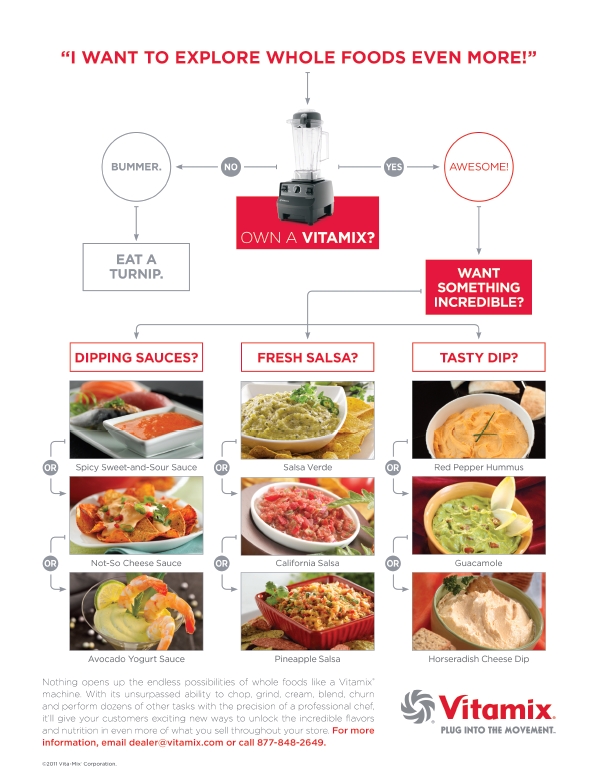Ever notice how a particular task can be tiring, but the minute you switch to something else, you’re full of energy? Where did your fatigue go? Our minds have surprising power to quickly change our intensity levels and emotions. In retailing, when Labor Day arrives, if you’ve been away on vacation, it’s really tough to immediately click back into work mode. And, if you haven’t had a vacation, it’s doubly hard to stay in the groove when everyone else around you is rested and refreshed. What can you do? Change helps wake up our spirits. Here are a few ideas to help you re-energize your store and yourself in the process.
Five Minutes
Being a natural procrastinator, I’ve had to learn to manage my inertia. One of the most powerful mental tricks I’ve found when a daunting project looms is to simply start. Instead of thinking about the whole project as one big, intimidating mass—which just creates more inertia—I dive in at the most accessible point. This way, even if I spend just five minutes at the end of the day, I’ve started the project in my mind. Overnight, the subconscious continues to work on the task and, next day, it is easier because mentally I am continuing the project, not starting the project. It’s also stunning what you can do in five minutes. The sense of accomplishment you get from this effort creates positive, self-reinforcing feedback: You begin to anticipate the rewarding feeling of starting the next project.
Storefront
One of the simplest and best ways to brighten and freshen up your store is the display window in front. My uncle designed seasonal storefront displays for several retailers in New York City. Music stores, sports stores, clothing stores. As with any display, simple is best. Less is more. Stick with one big idea. People love to look at other people, so if you can get hold of a mannequin or two, and a chair, you open up lots of possibilities.
Displays don’t have to be expensive. Crepe paper glued onto big sheets of butcher paper can create eye-catching, colorful images that register immediately. Think big. Remember, passersby will glance at your window maybe for one second, so your visual image must be bold. Be theatrical and have fun. You don’t need to be literal, and you don’t have to focus on just vitamins and supplements. The purpose of your display is to draw the eye and inspire someone to grab hold of your door and walk in.
Five-minute quick-start:
Needed: Step ladder; 36”w x 72”l white butcher paper; 2” transparent Scotch tape; thick-tipped multi-colored magic markers; bucket of warm water; large sponge.
Action: Strip out all the existing display materials. Swab down all surfaces with damp sponge and leave area clean. Write on butcher paper with markers: “Fresh smoothies inside—please come in!” Draw a large glass with straw the length of the paper. (Shoppers love fresh foods!) Tape to inside of window or to wall.
This is a great project for front-line team members, newer employees and anyone looking for something interesting to do. Also, think about your local elementary or secondary schools. This could be an ideal, recurring project for the art class, or a field-training exercise for more-serious college art students.
Facing and Counting
Since your biggest investment is probably your inventory, it makes sense to pay attention to keeping it groomed and organized. You can kill two birds with one stone (a rather violent, non-sustainable idiom, I’ll admit) by taking one shelving bay at a time and dusting, organizing, facing and counting your inventory. In this way, you’ll have neat, clean products sitting on shiny shelves, and you’ll have an accurate inventory count for that section. Do this for each section of shelving in rotation over the course of one calendar-quarter, and you’ll have a clean, well-faced store and an accurate inventory count four times per year. Dusting, facing, and counting inventory is also a perfect fill-in task for slow times in the store. This can be the default project for all front-line team members and a regularly scheduled task for department stockers and buyers.
Five-minute quick-start:
Needed: All front-line staff should have a feather duster in the back pocket, or tied to apron loop, at all times. Also, some form of recording device for inventory count; either paper pad, smart phone notepad app, or vendor-provided product-code scanner.
Action: For staff with department-specific duties, begin by assigning a four-foot (or other length) shelving bay to dust and face. Remove all products from top shelf. Dust shelf. Dust and replace product and face to front edge of shelf. Count inventory by sku number, or brand, description and size. Proceed to next shelf lower down and repeat.
The Cash Wrap
Wal-Mart has a greeter that welcomes shoppers as they enter the store, but a better place for greeters might be after the checkouts, to bid shoppers goodbye and ask if they’ve had a pleasant experience. Your cash wrap is probably the most important place in your store because shoppers stand still longer here than any place else. It is also true that we tend to remember most the things that happen to us last. You can easily ruin a great shopping trip by allowing a bad ending at your registers. Long lines, delays, clutter, or a grumpy or silent cashier can quickly destroy the good feeling you’ve created  throughout your store. Paying close attention to the details of your checkout experience can help ensure you send shoppers home with a positive impression.
throughout your store. Paying close attention to the details of your checkout experience can help ensure you send shoppers home with a positive impression.
Five-minute quick-start:
Action: Remove all unnecessary clutter from on and around the checkout counters. This includes low-dollar, low-profit or low-frequency products, sloppy countertop displays, unrelated printed information and anything blocking the line of vision above a 60-inch height for customers or cashiers. Clear the area where shoppers queue up to check out.
The checkout experience has many layers, including a training aspect for your cashiers, guidelines for service-level standards such as when to open an additional register, whether cashiers should engage in sales talk with customers, applying discounts, and handling complaints and returns. There may be no better rxaeturn-on-investment than paying careful attention to the tangible and intangible details of your checkout experience. After all, a bad experience here is what most customers will remember and talk about when they get home.
Decompression Zone and Circulation Area
Because most natural products stores are small, you are always under pressure to find space for products and displays. While you can’t entirely eliminate this problem, you can be aware of the most important principles and largest pitfalls. Every store should have a clutter-free space immediately inside the entry way. In retail design, this is called a “decompression zone.” Ideally, it should be a clear space eight feet deep between the doorway and the first object the shopper encounters, be it a floor stand, gondola shelving, shopping carts, promotional display, or other fixture. The reason for the decompression zone is to allow shoppers time and space to adjust to your store environment after leaving the hectic atmosphere in the parking lot or street just outside your door.
Circulation areas are the clear aisle spaces between gondolas and around your retail perimeter. In a small store, you won’t be able to achieve the ideal six-foot minimum circulation area between objects, but you can reduce the pressure and improve the shopping experience by keeping the space you do have as clear as possible.
Five-minute quick-start:
Walk through your front door as if you are a customer. Any objects inside of eight feet are candidates for removal to another location. Walk the aisles of your store. Cardboard floor stands that create bottlenecks, especially at the ends of gondolas, should be eliminated. This may mean converting an end cap to a promotional display instead of a permanent home for products.
Creating and maintaining “breathing room” for shoppers in your store is a continuous challenge. Ask your team for suggestions to increase their sensitivity to the issue. Eventually, they will initiate the action.
A Virtuous Circle
The most striking thing about diving into change is that even small steps—as long as they are in the right direction—can quickly change team-member attitudes for the better. Seeing immediate, tangible results, however modest, creates a positive, self-reinforcing feedback loop that encourages everyone to continue finding ways to improve the quality of the shopping experience and to think creatively about how best to serve customers.
I promise you, if you make one positive change in each of the four areas I’ve outlined above, not only will you improve your customers’ shopping experience, you’ll motivate your team and re-inspire yourself at the same time. That’s a pretty good return-on-investment. While you can’t easily change the dimensions of your space, you can change the way you think about it, and unleash the amazingly flexible power of your mind. WF
Jay Jacobowitz is president and founder of Retail Insights®, a professional consulting service for natural products retailers established in 1998, and creator of Natural Insights for Well Being®, a comprehensive marketing service designed especially for independent natural products retailers. With 34 years of wholesale and retail industry experience, Jay has assisted in developing over 900 successful natural products retail stores in the U.S. and abroad. Jay is a popular author, educator, and speaker, and is the merchandising editor of WholeFoods Magazine, for which he writes Merchandising Insights and Tip of the Month. Jay also serves the Natural Products Association in several capacities. He will next be speaking at Natural Products Northwest, scheduled for Thursday, October 20, 2011 in Seattle, on the topic of “To Keep and Win Customers Today, Tell YOUR Story”. Retail Insights® will be exhibiting at the show, and will also be exhibiting at Natural Products Expo East in September. He can be reached at (800)328-0855 or via e-mail at jay@retailinsights.com.
consulting service for natural products retailers established in 1998, and creator of Natural Insights for Well Being®, a comprehensive marketing service designed especially for independent natural products retailers. With 34 years of wholesale and retail industry experience, Jay has assisted in developing over 900 successful natural products retail stores in the U.S. and abroad. Jay is a popular author, educator, and speaker, and is the merchandising editor of WholeFoods Magazine, for which he writes Merchandising Insights and Tip of the Month. Jay also serves the Natural Products Association in several capacities. He will next be speaking at Natural Products Northwest, scheduled for Thursday, October 20, 2011 in Seattle, on the topic of “To Keep and Win Customers Today, Tell YOUR Story”. Retail Insights® will be exhibiting at the show, and will also be exhibiting at Natural Products Expo East in September. He can be reached at (800)328-0855 or via e-mail at jay@retailinsights.com.
Published in WholeFoods Magazine, September 2011










